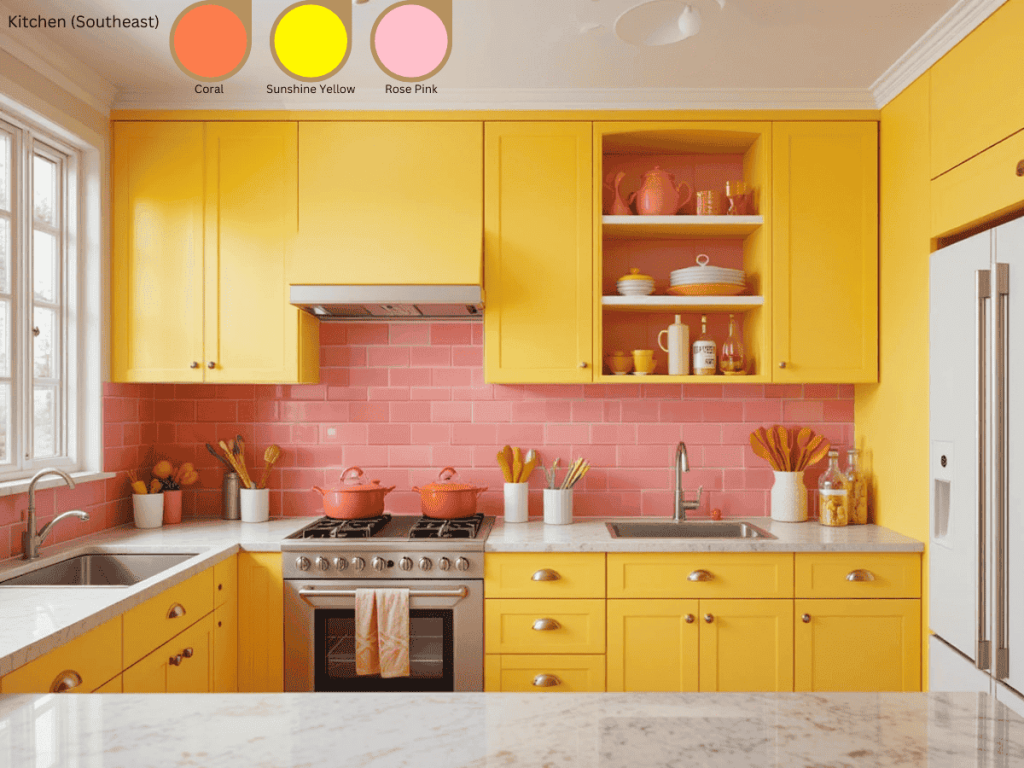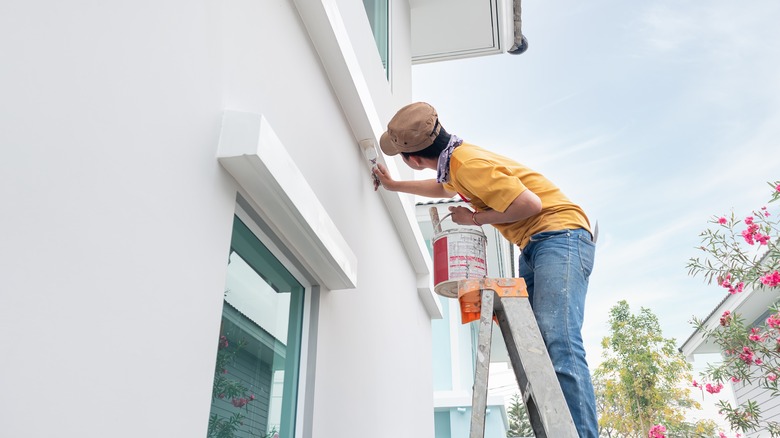Choosing the right colours for your home is not just about aesthetics; it also plays a significant role in creating positive energy and harmony according to Vastu Shastra. The ancient Indian science of architecture suggests that colours influence mood, health, and prosperity.
In this blog, we’ll explore the best Vastu colours for home, kitchen, and walls, along with a Vastu colour chart to help you make the right choice.
Why Are Vastu Colours Important?
According to Vastu, every colour has a unique vibration that affects the energy flow in a space. The right colours can:
- Enhance positivity
- Improve mental peace
- Boost prosperity and relationships
- Balance the five elements (Earth, Water, Fire, Air, Space)
Best Vastu Colours for Different Rooms
1. Living Room (North or Northeast Wall)
The living room is where family and guests gather, so it should have welcoming and vibrant energy.
- Best Colours: Light shades of yellow, green, blue, or white
- Avoid: Dark red or black (can create aggression or negativity)


2. Bedroom (Southwest Direction)
The bedroom should promote relaxation and harmony between couples.
- Best Colours: Light pink, peach, light blue, lavender, or cream
- Avoid: Bright red (can cause restlessness) or dark grey


3. Kitchen (Southeast Direction – Fire Element)
The kitchen represents fire energy, so warm and bright colours work best.
- Best Colours: Orange, red, yellow, or rose pink
- Avoid: Black or dark blue (suppresses fire energy)


4. Study Room / Home Office (North or East Direction)
Enhance concentration and mental clarity with soothing yet energizing colours.
- Best Colours: Light green, sky blue, or white
- Avoid: Dark brown or grey (can cause lethargy)


5. Bathroom (Northwest Direction)
Bathrooms should feel clean and fresh.
- Best Colours: White, light grey, or pastel shades
- Avoid: Dark colours (can make the space feel heavy)


Vastu Colour Chart for Home
| Direction | Recommended Colours | Avoid Colours |
| North | Light Blue, Green | Dark Red, Black |
| Northeast | White, Light Yellow | Dark Brown |
| East | Green, Light Blue | Dark Grey |
| Southeast | Orange, Red | Black |
| South | Red, Pink | Blue |
| Southwest | Peach, Earthy Tones | Bright Red |
| West | White, Light Grey | Dark Blue |
| Northwest | White, Light Grey | Dark Red |
Additional Vastu Colour Tips
- Ceilings: Should always be white or light-coloured to create an open and airy feel.
- Doors & Windows: Use wooden shades or white for positivity.
- Children’s Room: Light green or blue enhances creativity and calmness.
- Expert guidance – Consult our colour specialists call Paint Sutra:- 9700226666, 8336885588
Why Choose Paintsutra for Vastu-Compliant Painting?
✅ Eco-friendly paints – Safe for families and the environment.
✅ Wide Vastu range – Curated shades for every direction.
✅ Expert guidance – Consult our colour specialists for a Vastu-aligned home.
Conclusion
Choosing the right Vastu colours for your home can significantly impact the energy, mood, and prosperity of your living space. By following this Vastu colour guide, you can create a balanced and harmonious environment.
Would you like a personalized Vastu colour consultation for your home? Let us know in the comments!






























